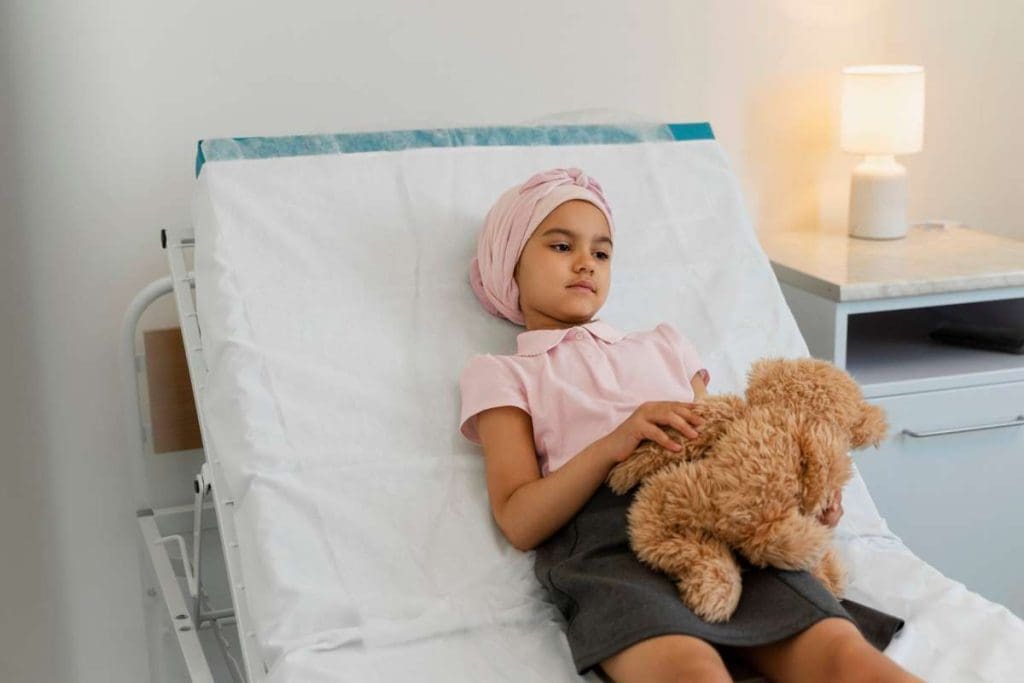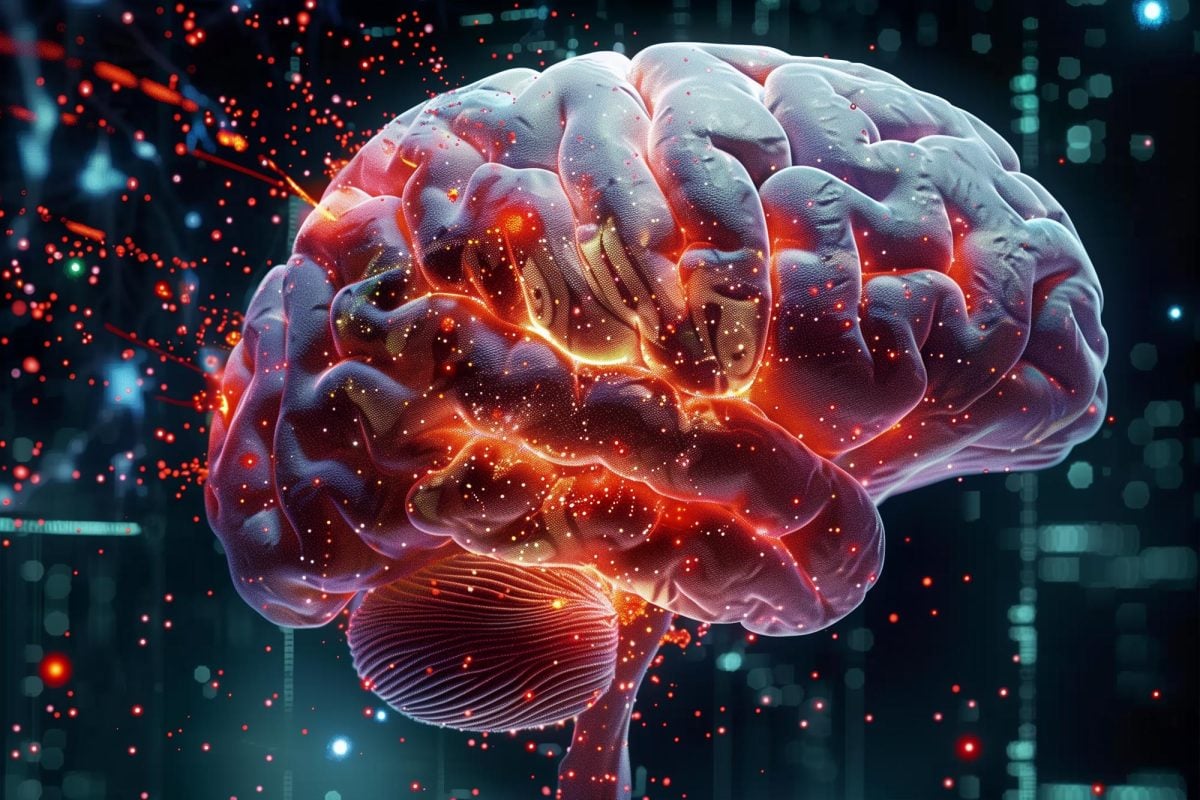Last Updated on November 14, 2025 by

Cancer in children is a big health problem worldwide. Leukemia is the most common cancer in kids. The American Cancer Society says about 9,550 kids in the US will get cancer in 2025.
We know how important it is to give kids with cancer the best care. We offer top treatments and support that meet their special needs. This includes help for their families too.
We promise to give the best healthcare to kids from all over. We make sure they get the care they need.
Pediatric oncology is a field that deals with cancer in kids. It’s different from cancer in adults. Knowing these differences helps in treating and caring for children better.
Pediatric cancers are not the same as adult cancers. Kids often get different types of cancer. For example, adults get breast, lung, or colon cancer, but kids get leukemia, brain tumors, or lymphomas.
Key differences include:
Cancer and its treatment can affect a child’s growth. This includes physical, emotional, and educational development. The impact depends on the cancer type, the child’s age, and the treatment.
Some possible impacts are:
We understand the need for complete care for children with cancer. Our team works hard to provide the best treatment and support. We aim to help our young patients in every way possible.
Leukemia is the most common cancer in kids, making it very important to know about it. It’s a big deal in pediatric oncology, making up about 28-30% of all childhood cancer cases. Understanding leukemia is key for early detection and treatment.

Pediatric leukemia is mainly divided into two types: Acute Lymphocytic Leukemia (ALL) and Acute Myeloid Leukemia (AML). ALL is the most common, making up about 80% of cases. ALL is characterized by the rapid production of immature lymphocytes, a type of white blood cell. AML, on the other hand, involves the uncontrolled growth of myeloid cells, leading to different complications.
Recent studies show that knowing the type is key for the right treatment. “The diagnosis and classification of leukemia have evolved significantly, allowing for more targeted and effective therapies,” says a leading pediatric oncology expert.
While we’re not sure what causes pediatric leukemia, some risk factors have been found. These include genetic predispositions, certain environmental exposures, and treatments involving radiation or chemotherapy. Understanding these risk factors can help in early detection and prevention.
Spotting leukemia symptoms early is critical for timely treatment. Common signs include persistent fatigue, pale skin, frequent infections, and easy bruising. Parents and caregivers should watch for these signs and see a doctor if they don’t go away.
“Early diagnosis significantly improves the chances of successful treatment outcomes in children with leukemia,” emphasizes a pediatric oncologist.
By knowing about leukemia’s types, risk factors, and symptoms, we can help kids more. Our institution is dedicated to giving full care and support to families dealing with pediatric leukemia.
Brain and central nervous system (CNS) tumors are a big worry in kids’ cancer care. They are the second most common type of childhood cancer. These tumors can be either benign or malignant. They need special care because of their location and how they affect growing children.

Pediatric brain tumors come in many types, each with its own challenges. Some of the most common include:
It’s important to spot the early signs of brain and CNS tumors. This helps in getting a quick diagnosis and treatment. Look out for symptoms like:
These signs can mean increased intracranial pressure or direct tumor effects on the brain.
Diagnosing brain and CNS tumors uses imaging studies like MRI and CT scans, and examining tumor tissue. Treatment plans are made for each child, based on the tumor type, location, and health.
Treatment options include:
We use a team approach, with neurosurgeons, oncologists, radiologists, and support staff. This ensures care is tailored to each child’s needs.
Leukemia is not the only cancer kids face. Lymphomas, neuroblastoma, Wilms tumor, and bone cancers are also common. Each one needs its own way of being diagnosed and treated, showing how complex pediatric oncology is.
Lymphomas affect the lymphatic system. They are mainly Hodgkin lymphoma (HL) and non-Hodgkin lymphoma (NHL). Hodgkin lymphoma has Reed-Sternberg cells and spreads in a predictable way. Non-Hodgkin lymphoma is more varied, with different levels of aggressiveness and treatment responses.
Symptoms of lymphomas include:
We use a detailed treatment plan for lymphomas. This might include chemotherapy, radiation, and sometimes stem cell transplantation. The treatment depends on the lymphoma type, stage, and the child’s health.
Neuroblastoma, Wilms tumor, and bone cancers like osteosarcoma and Ewing’s sarcoma are also common. Neuroblastoma starts in the adrenal glands but can spread to other areas. Wilms tumor mainly affects the kidneys and is often found in young kids.
Bone cancers, like osteosarcoma and Ewing’s sarcoma, cause pain and swelling in bones. We use advanced imaging and biopsies to accurately diagnose these cancers.
The treatment for these cancers is a mix of:
We aim to give full care to kids with these complex cancers. We use proven treatments and a team of specialists to help them get better.
Studies on childhood cancer help us understand how often it happens and its trends. This knowledge is key for planning better healthcare. Childhood cancer is a complex field with many types, each with its own patterns.
The rate of childhood cancer changes with age and type. Leukemia is the top cancer in kids, making up 30% of all cases. It’s most common in kids aged 2-5. Brain and central nervous system (CNS) tumors also vary by age.
Each cancer type affects kids differently. Neuroblastoma hits younger kids, while lymphomas are more common in older ones. Knowing this helps us catch and treat cancer early.
Looking at how childhood cancer rates change over time is important. Survival rates for childhood cancer have gotten better, but some cancers are harder to beat.
Some childhood cancers are becoming more common, but only slightly. For example, some leukemia and brain tumors are increasing. But, better diagnosis and treatment have helped many kids survive.
We need to keep watching these trends and support research into childhood cancer causes. This way, we can find better ways to prevent, detect, and treat cancer in kids.
To understand childhood cancer in the U.S., we need to look at the latest stats on diagnosis and survival rates. Childhood cancer is rare but serious, affecting kids of all ages. It comes in many types.
The American Cancer Society says about 9,550 kids will get cancer in 2025. This shows we must keep working on finding causes and treatments. Leukemia, brain tumors, and lymphomas are the top cancers in kids.
Good news: more kids are surviving cancer thanks to better treatments and care teams. Now, over 85% of kids with cancer live for at least five years. This shows how far we’ve come in treating kids with cancer.
What’s helping kids live longer includes:
These things help kids get better and live better lives after cancer.
Pediatric cancer affects children all over the world. Every year, about 400,000 new cases are diagnosed. It’s a big health issue that needs a deep understanding of its spread and the challenges in getting care.
The rates of pediatric cancer vary around the globe. This is because of genetics, environment, and how well places can diagnose cancer. In rich countries, more kids are diagnosed with cancer. This might seem like a bad thing, but it could mean they’re getting better at finding and reporting cancer.
Key statistics on international incidence rates include:
There are big differences in how kids with cancer are treated around the world. Rich countries have better healthcare, which means kids get the care they need faster. But, poor countries struggle to get the right care because of lack of resources.
The main healthcare disparities include:
We know these problems and want to help. We’re working together to make sure all kids with cancer get the care they need. This includes sharing knowledge and supporting efforts to improve healthcare for kids with cancer everywhere.
Effective treatment of pediatric cancer needs a mix of the latest research and proven practices. At livhospital.com, we aim to offer top-notch healthcare. We support international patients fully.
We follow evidence-based treatment protocols to improve patient outcomes. These protocols keep up with new discoveries in pediatric oncology. This ensures our patients get the best care possible.
We use the latest research and clinical trials to create personalized plans. This has greatly boosted survival rates and quality of life for kids with cancer.
Pediatric cancer needs a multidisciplinary care team approach. Our team includes experts from various fields. They work together to create and carry out treatment plans tailored to each child.
This teamwork ensures all aspects of a child’s care are covered. From medical treatment to emotional support, we address every need. This way, we provide complete care for each child.
At livhospital.com, we’re committed to outstanding pediatric cancer care. Our team is always learning about pediatric oncology treatment. We make sure our patients get the newest treatments and technologies.
We know how important it is to support international patients and their families. Our support services help make the treatment process easier. We assist with everything from finding a place to stay to helping with language barriers.
Great strides have been made in treating childhood cancers. This brings hope for better survival rates and quality of life for kids with cancer. Our team is dedicated to giving top-notch care and support to these families.
We keep working to improve childhood cancer care. Our goal is to offer the best healthcare and support to patients from around the world. Our team uses the latest research to ensure kids get the best treatment.
The future of treating childhood cancer looks promising. Ongoing research and care improvements offer hope for better outcomes and quality of life. We’re proud to lead these efforts, making a real difference in the lives of children with cancer.
Childhood cancer includes leukemia, brain tumors, lymphomas, neuroblastoma, Wilms tumor, and bone cancers. Leukemia is the most common, making up a big part of childhood cancer cases.
Pediatric cancer is different from adult cancer in many ways. It includes different types of cancer and affects a child’s growth. Pediatric cancers are aggressive but often respond well to treatment.
Symptoms of leukemia in kids include tiredness, pale skin, frequent infections, easy bruising, and bone pain. If you see these signs, see a pediatrician or oncologist right away.
Diagnosing childhood cancer involves physical checks, imaging tests, and lab tests. A pediatric oncologist will use these results to plan treatment.
Treatment for pediatric cancer depends on the cancer type, stage, and the child’s health. Treatments include chemotherapy, radiation, surgery, and immunotherapy. A team of experts will create a treatment plan for your child.
Survival rates for childhood cancer have greatly improved. In developed countries, survival rates are 80% to 90%. But, rates vary by cancer type, age, and access to care.
Cancer and treatment can affect a child’s growth and development. A pediatric oncology team aims to minimize these effects. They provide age-specific care and support, like counseling and education.
Families facing childhood cancer can get help with counseling, financial aid, and more. Many places, like ours, offer support to help families through this tough time.
Yes, there are clinical trials for new treatments in pediatric cancer. These trials aim to improve outcomes and reduce side effects. A pediatric oncologist can discuss trial options with families.
For the best care, seek treatment at a reputable place with a dedicated pediatric team. We offer top-notch care and support for international patients, ensuring your child gets the best care.
Subscribe to our e-newsletter to stay informed about the latest innovations in the world of health and exclusive offers!